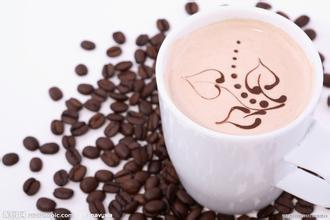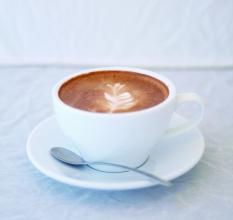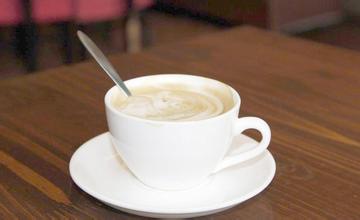Ethiopian Coffee Manor with rich taste introduces the taste of Ethiopian coffee producing areas
Harald coffee, which grows within 900m from the Darolebu plain to 2700 m from the highland mountain range of Chercher in eastern Ethiopia. These mountains do provide unique characteristics for these perennial coffee beans: the fruit is full and long, moderately acidic, with a typical mocha flavor. Harald Coffee is the world's leading premium coffee; although the variety is produced abroad, it gives people a friendly feel, smooth and smooth taste, giving people the rich taste of real mocha coffee. Harald coffee has almost the lowest caffeine content, about 1.13%. It is estimated that of the 52000 hectares under cultivation, the average annual production of this coffee is 26000 tons (equivalent to 430000 bags of 60 kg coffee).
Harald is not only one of the best sun-tanned coffee in the world, known as "coffee in the wilderness", but more like a beautiful legend. Harald, a name that reflects the rise and fall of Essex. At a time when the means of transport were still underdeveloped, especially when horses were the main means of transportation, high-quality thoroughbred horses became the goal that people pursued and aspired to. At this time, Essex Harald had the best thoroughbred horses in the world. So they initially classified the coffee grade as "quality coffee is as important as horses of purebred blood." So we see that the bags of raw Harald coffee beans are still printed with pictures of horses, and this traditional packaging has been maintained to this day.
Harald of Grade 5 is almost equivalent to the whole bean, and it is naturally very irregular without graded selection; it is impossible for such beans to be roasted evenly unless they are roasted very deep, lose their own characteristics, and lose most of the aroma of coffee. If you want to fully reflect the regional characteristics of raw coffee beans, it is best to choose a shallow baking degree, in order to more accurately and fully feel the flavor of coffee beans, you can use multi-stage baking method, that is, the same kind of raw coffee beans use different baking stages to compare and taste.
For the Ethiopian Harald harar coffee raw beans brought by us, we picked out the obvious defective beans, broken beans, and so on, and divided them into two halves, using cinnamon baking (beans in the middle of the first explosion), Vienna roasting (roasting to the beans in the second explosion, some slightly out of oil).
Harald coffee, which is roasted with cinnamon (beans in the middle of the first explosion), is naturally a little irregular, with some wrinkles in the beans and looks ugly. The coffee powder has some implicit and pure aroma. After brewing in a siphon coffee pot, there is really an obvious hint of citrus fruit aroma, but the citrus flavor is only the aroma, and the coffee in the mouth has no citrus flavor. The sun beans look messy, but the taste is quite clean and pure, and it is relatively rich and balanced, floating with a little bitterness; the aroma is more distinctive than the taste.

Important Notice :
前街咖啡 FrontStreet Coffee has moved to new addredd:
FrontStreet Coffee Address: 315,Donghua East Road,GuangZhou
Tel:020 38364473
- Prev

Introduction of Jamaican coffee flavor taste of Jamaican coffee producing area introduction of Jamaican Blue Mountain Coffee
In 1717, King Louis XV of France ordered the cultivation of coffee in Jamaica. In the middle of the Blue Mountain Coffee era, the Governor of Jamaica, Sir Nicholas Nicholas Lawes, imported Arabica seeds from Martinique and began to plant them in St. Andrew. To this day, the St. Andrews area is still
- Next

Panamanian Coffee Emerald Manor introduce Rosa Coffee Flavor and taste introduce Rosa Coffee Price
Panamanian Emerald Manor Panamanian Emerald Manor-Esmeralda Manor (Panama Geisha Hacienda La Esmeralda) in its early years, Esmeralda Manor mostly followed Japan in its recognition of top coffee, while Geisha, with its hurricane-like power, swept through the coffee industry, and the coffee revolution was so fierce that it made the Blue Mountains of Jamaica, which had occupied the throne of the coffee kingdom for a long time.
Related
- Detailed explanation of Jadeite planting Land in Panamanian Jadeite Manor introduction to the grading system of Jadeite competitive bidding, Red bid, Green bid and Rose Summer
- Story of Coffee planting in Brenka region of Costa Rica Stonehenge Manor anaerobic heavy honey treatment of flavor mouth
- What's on the barrel of Blue Mountain Coffee beans?
- Can American coffee also pull flowers? How to use hot American style to pull out a good-looking pattern?
- Can you make a cold extract with coffee beans? What is the right proportion for cold-extracted coffee formula?
- Indonesian PWN Gold Mandrine Coffee Origin Features Flavor How to Chong? Mandolin coffee is American.
- A brief introduction to the flavor characteristics of Brazilian yellow bourbon coffee beans
- What is the effect of different water quality on the flavor of cold-extracted coffee? What kind of water is best for brewing coffee?
- Why do you think of Rose Summer whenever you mention Panamanian coffee?
- Introduction to the characteristics of authentic blue mountain coffee bean producing areas? What is the CIB Coffee Authority in Jamaica?

